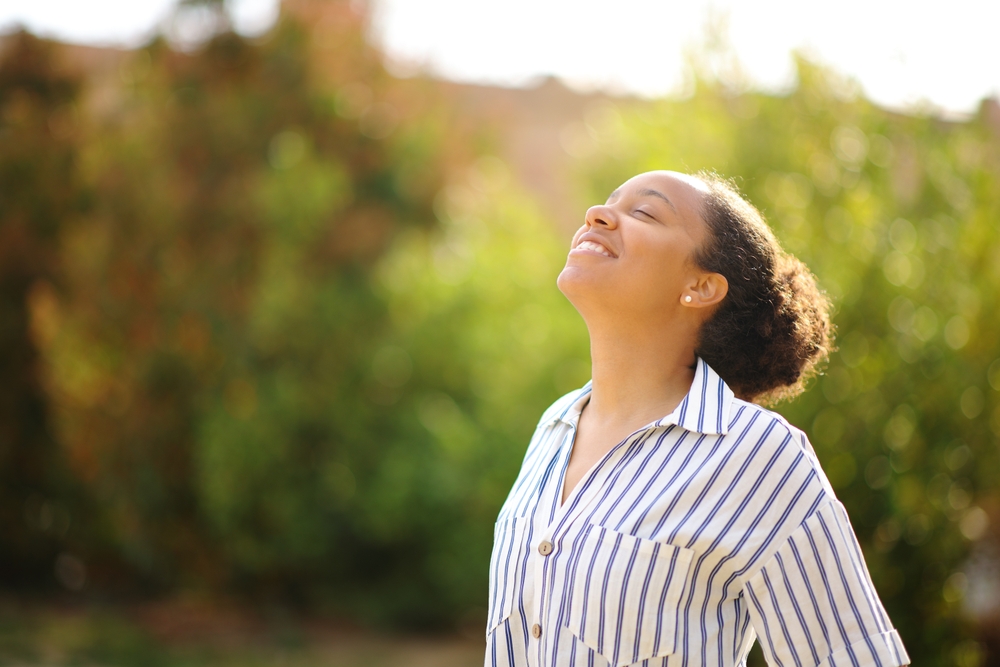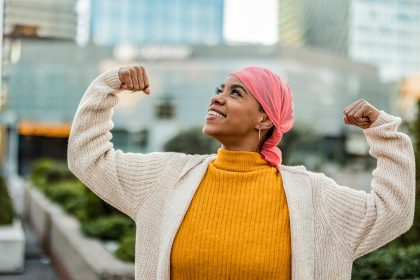While glossy travel magazines typically portray paradise as exclusive island resorts and gated compounds for the wealthy, New Orleans quietly demonstrates a more profound truth: authentic paradise is found in accessible joy, cultural richness, and human connection rather than massive wealth.
In the Crescent City, pleasure isn’t reserved for those with platinum credit cards but flows freely through streets where strangers dance together, where a $5 bill secures world-class music experiences, and where community wealth often compensates for financial limitations. The city’s unique ability to transform everyday moments into celebrations offers a radical reimagining of what constitutes the good life.
The evidence? Despite ranking below national averages in typical economic measures, New Orleans consistently rates remarkably high in resident happiness studies. This apparent contradiction reveals something essential about human nature that the city has long understood: paradise exists where life’s genuine pleasures remain accessible to all.
The economics of accessible paradise
New Orleans maintains a cost of living approximately 4% below the national average, with housing costs about 15% lower. The median home price hovers around $265,000 – dramatically below comparable “paradise” cities like Miami ($450,000), San Diego ($910,000), or Honolulu ($870,000).
This affordability extends beyond housing into daily life. While wage levels generally fall below national averages, the city’s economics create breathing room for residents across income levels. Most notably, many of life’s pleasures remain democratized in ways other American cities have lost.
The Bywater neighborhood exemplifies this balance, offering Mississippi River access, vibrant street art, and local cafes at price points accessible to the artists and service workers who give the area its character. Similarly, Algiers Point provides historic architecture and French Quarter views via a $2 ferry ride, with housing costs that remain within reach of middle-income residents.
Even in more affluent areas like the Garden District, accessible pleasure remains a core value. The historic St. Charles Avenue streetcar delivers million-dollar mansion views for a $1.25 fare. This democratization of beauty creates daily paradise moments regardless of bank account balance.
The sensory feast: Affordable pleasures for body and soul
Perhaps no American city delivers more sensory pleasure per dollar than New Orleans. The city’s food culture embodies this accessible luxury principle perfectly – world-class cuisine exists at every price point, from James Beard award-winning restaurants to neighborhood joints serving transcendent po-boys for under $15.
Traditional dishes like red beans and rice, historically created as Monday leftovers, deliver complex flavors at minimal cost. Neighborhood restaurants like Coop’s Place and Parkway Bakery & Tavern offer memorable meals that outshine expensive dining in other cities without breaking the bank. Even haute cuisine becomes accessible through lunch specials at Commander’s Palace, where 25-cent martinis transform fine dining into an attainable luxury.
Music – the city’s heartbeat – operates under similar democratic principles. On Frenchmen Street, world-class performances happen for the price of a drink or a modest cover charge. Venues like The Spotted Cat and d.b.a. showcase Grammy-winning talent for less than the cost of a movie ticket elsewhere. Meanwhile, completely free music abounds, from French Quarter street performers to Wednesday at the Square concert series to impromptu second line parades that transform ordinary afternoons into joyful processions.
Even the city’s natural plec vnd recreation areas – 50% larger than New York’s Central Park – with most areas completely free. The Mississippi River’s cooling breezes and sunset views cost nothing along Crescent Park’s walking paths. This abundance of public, natural beauty ensures that wealth never becomes a prerequisite for experiencing the city’s environmental gifts.
Community wealth: The paradise beyond money
Perhaps most distinctive about New Orleans’ version of paradise is its rich community infrastructure. The city’s social fabric demonstrates how collective wealth often matters more than individual affluence in creating genuine quality of life.
Social aid and pleasure clubs, which originated in the 19th century to help community members with medical bills and funeral costs, continue supporting members through life’s challenges while organizing the second line parades that spread joy throughout neighborhoods. These mutual aid networks demonstrate how communal structures can provide financial security beyond individual resources.
Neighborhood traditions further strengthen this community wealth. Front porch sitting culture turns residential streets into informal gathering spaces where relationship-building happens naturally. Block parties, crawfish boils, and impromptu gatherings create communal pleasure that requires minimal financial investment. This emphasis on shared experience over private consumption generates a sense of abundance that transcends economic limitations.
The city’s approach to celebration further democratizes joy. While Mardi Gras might seem like an elaborate expense, its most authentic experiences – neighborhood parades, street dancing, costuming – remain accessible to all. Unlike ticketed events in other cities, New Orleans’ greatest festivities involve minimal financial barriers to participation. This accessibility ensures that celebration remains a community right rather than a luxury purchase.
These community structures have proven particularly valuable during challenges. After Hurricane Katrina, neighborhood networks mobilized resources and support faster than official agencies. Residents with minimal financial reserves nonetheless possessed tremendous social capital that proved invaluable during recovery. This resilience demonstrates how community wealth creates security that money alone cannot buy.
The slow life: Time as the ultimate luxury
Beyond material affordability, New Orleans’ greatest gift to residents may be its relationship with time. The city embraces a pace that prioritizes living well over productivity metrics that dominate elsewhere – an approach captured in the unofficial motto “laissez les bon temps rouler” (let the good times roll).
This temporal abundance manifests in extended restaurant meals where conversation matters more than table turnover. It appears in impromptu music sessions that stretch late into night with participants unconcerned about morning alarm clocks. It shows in the willingness to pause daily routines when celebration opportunities arise, whether for an impromptu parade or a sunset worthy of collective appreciation.
For many residents, this relationship with time represents the ultimate luxury – one increasingly unavailable even to the wealthy in high-pressure cities where status depends on perpetual busyness. New Orleans’ comfort with leisure challenges the American equation of time maximization with success, suggesting that paradise might be found in moments of presence rather than constant productivity.
Transplants from higher-income regions frequently cite this temporal abundance as their primary motivation for accepting lower wages in exchange for New Orleans living. Software developers leaving Silicon Valley salaries, healthcare professionals departing high-paying urban practices, and creative professionals exiting New York frequently report that the city’s gift of time justifies the financial trade-off.
The authenticity factor: A paradise of realness
In an era where many luxury experiences feel manufactured and generic, New Orleans offers something increasingly rare: authentic culture developed organically over centuries rather than created for tourist consumption. This authenticity generates a sense of place that many wealthy enclaves strive to create but cannot purchase.
The city’s traditions evolved through genuine community needs rather than marketing plans. Second lines originated in funeral traditions, now continuing as living culture rather than performances for outsiders. Jazz developed through complex cultural exchange, remaining vital through continuous community participation rather than preservation efforts. Culinary traditions passed through generations in home kitchens maintain integrity beyond commercialization.
This authenticity extends to neighborhood character, with areas like Tremé and the Seventh Ward maintaining distinct identities despite development pressures. Unlike manufactured communities that attempt to create character through design committees, these neighborhoods evolved organically through resident relationships, shared history, and collective experience.
For many residents, this authenticity represents a form of wealth transcending financial metrics – the ability to live in a place with genuine character, where traditions maintain meaning beyond commercial exploitation. This cultural richness provides daily paradise moments impossible to purchase in more economically prosperous but culturally homogenized environments.
The creative economy: making meaning beyond money
New Orleans’ affordability creates space for creative pursuits often impossible in higher-cost cities. Artists, musicians, writers, and creators cite the city’s economics as crucial to maintaining their practice without requiring full commercial success or wealthy benefactors.
This creative accessibility manifests in housing options like the Bywater’s studio spaces, where visual artists maintain workspaces at costs inconceivable in New York or San Francisco. It appears in musician-friendly neighborhoods where rehearsal space remains affordable. It shows in the ability to pursue artistic paths without requiring trust funds or tech job subsidies.
The resulting creative density generates cultural wealth available to all residents. Neighborhoods enjoy artistic abundance – street performances, gallery openings, impromptu concerts – that remain accessible rather than isolated in exclusive venues. This democratization of creativity ensures that artistic pleasure never becomes a luxury good available only to high earners.
Musicians particularly benefit from the city’s economic structure. While few achieve wealthy status, many maintain sustainable careers through combinations of tourist-area gigs, teaching, and community performances. This musical middle class can pursue their art while maintaining modest but comfortable living standards – an increasingly rare possibility in cities where creative work has become either a wealthy person’s hobby or a struggle for survival.
The challenge: paradise imperfections
Acknowledging New Orleans as paradise doesn’t require ignoring its very real challenges. The city faces significant hurdles including infrastructure deficiencies, climate vulnerability, educational system limitations, crime concerns, and economic development needs. Many residents struggle with financial insecurity despite the cultural wealth surrounding them.
The affordable paradise model remains imperfect and sometimes fragile. Rising housing costs in popular neighborhoods have created displacement pressures that threaten long-established communities. Short-term rental proliferation has removed housing stock from the residential market in tourist-friendly areas. These changes risk undermining the very affordability that enables the city’s distinctive quality of life.
Climate vulnerability represents another significant challenge, with hurricane risks and flooding threats requiring expensive infrastructure solutions. Insurance costs have risen dramatically, creating additional financial burdens for homeowners. These environmental realities create a paradise that requires resilience alongside celebration.
Educational and economic opportunity limitations affect many residents, particularly in historically disinvested neighborhoods. While cultural wealth abounds, financial security remains elusive for many families. This reality creates a dual experience of the city – simultaneously joyful and challenging – that residents navigate daily.
Despite these challenges, the city continues demonstrating how quality of life transcends traditional economic metrics. Residents frequently describe choosing to remain despite opportunities elsewhere, prioritizing New Orleans’ cultural wealth and community connections over higher salaries or greater economic security.
The paradise mindset: lessons from the Crescent City
Beyond geography, New Orleans offers a philosophical approach to paradise that could transform lives anywhere. The city’s example suggests several transferable principles for creating paradise independent of massive wealth:
First, prioritize accessible pleasure in community design. New Orleans demonstrates how public spaces designed for collective enjoyment – parks, plazas, walkable neighborhoods – create daily joy more effectively than private luxury amenities. Cities everywhere could reorient development priorities toward democratic enjoyment rather than exclusive consumption.
Second, preserve cultural authenticity against homogenization pressures. The city’s distinctive traditions maintain vitality through ongoing community participation rather than commodification. This suggests the importance of supporting genuine culture rather than manufactured experiences, preserving what makes places meaningful.
Third, value temporal abundance alongside financial metrics. New Orleans’ comfort with leisure challenges the equation of constant productivity with success. This approach suggests reconsidering how we measure prosperity, prioritizing quality time alongside income statistics.
Fourth, invest in community wealth alongside individual affluence. The city’s social infrastructure demonstrates how mutual support networks create security beyond personal resources. This model suggests evaluating wellbeing through relationship strength and community resilience rather than just individual net worth.
Finally, democratize beauty and joy across economic levels. New Orleans ensures that celebration remains a community right rather than a luxury purchase. This approach suggests designing cities where life’s pleasures remain accessible rather than reserved for those with financial privilege.
These principles could transform communities far beyond Louisiana, creating paradise possibilities wherever people prioritize collective joy over exclusive consumption. The New Orleans model offers a radical proposition: perhaps paradise was never meant to be purchased but rather created through community, culture, and accessible pleasure.
For visitors and residents alike, New Orleans demonstrates that paradise isn’t a destination requiring wealth but a mindset available anywhere life’s genuine pleasures remain accessible to all. The city’s greatest gift may be this revelation – that joy, connection, and meaning remain available regardless of bank account balance, ready to be claimed by anyone willing to dance when the second line passes.


















